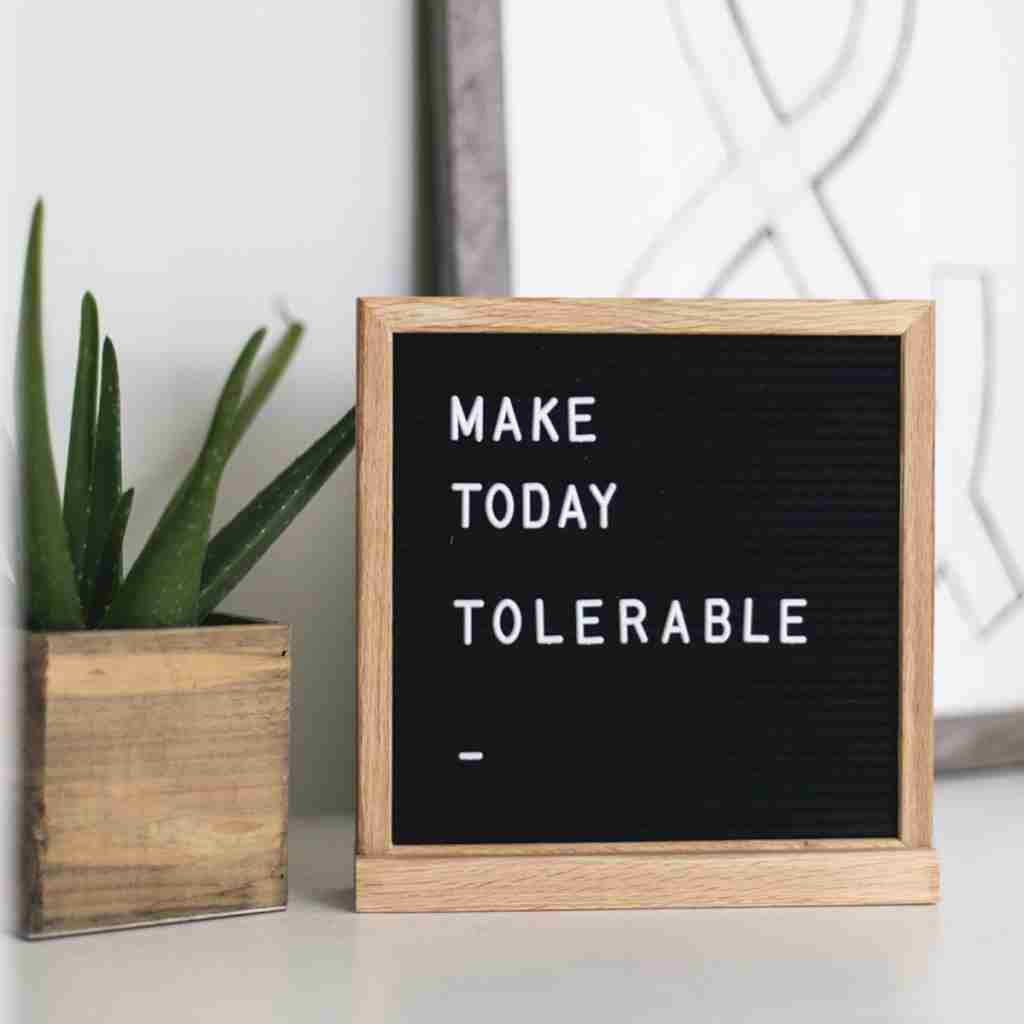How to Get Out of Survival Mode: Your Guide to Start Thriving
In today’s world, we can all use some guidance on how to get out of survival mode and start living in “thrival” mode.
The feeling of exhaustion, anxiety, and depression is at an unprecedented high and has made it so that most people merely survive day-to-day and never have the energy to strive for something better. But we all want better, don’t we?
To get something better, we need to get out of survival mode and into a mode of adaptation and resilience, but how do we do it?
We asked some experts this question: What is the difference between being resilient and simply having the endurance to survive? Keep reading to find out what they said!
What is Survival Mode?

Survival mode can be a psychological or physiological state that humans enter when facing real or perceived threats to their well-being or existence.
This mode, deeply ingrained in our biology, is a product of millions of years of evolution. It’s designed to help us survive in hostile environments and threatening situations.
However, in the modern world, where physical threats are less frequent, non-life-threatening stressors can trigger this primal response, leading many to live in a constant state of survival mode.
Understanding this phenomenon and learning how to move out of it is crucial for our mental and physical health.
At its core, survival mode is a manifestation of the body’s fight-or-flight response. When we perceive a threat, our sympathetic nervous system is activated, leading to a cascade of physiological changes: adrenaline and cortisol are released, heart rate increases, muscles tense, and non-essential functions like digestion are slowed.
This state of heightened alertness and readiness was crucial for our ancestors facing predators or other immediate dangers. Still, in a contemporary context, chronic stressors can trigger survival mode, such as financial worries, job insecurity, or relationship problems.
Effects on Physical and Mental Health
Living in survival mode can have profound implications for our health and well-being. It can lead to chronic stress, anxiety, and depression. It can disrupt sleep, weaken the immune system, and increase the risk of heart disease.
The constant stress can also affect cognitive functions, leading to difficulties in decision-making, memory, and concentration.
Despite its negative impacts, many people find themselves stuck in survival mode. This is partly due to the brain’s negativity bias, which makes us more sensitive to threats and negative experiences.
In a world that’s constantly changing and presenting new challenges, our brains often interpret these changes as threats, keeping us in a perpetual state of alertness.
Getting out of survival mode requires a conscious effort to manage stress and regain control of our responses to challenges in daily life. It means developing healthy coping mechanisms that help safeguard our mental health when we feel overwhelmed.
How to Get Out of Survival Mode: 6 Strategies

When you live in survival mode, your main goal is simply to get through a stressful day or difficult situation, not thinking about anything that comes after it.
That strategy never leads to increased ease, contentment, or inner peace. To break free from living in survival mode, we need an action plan.
Sound familiar? No matter how you’re trying to grow or evolve, having a real plan of action will always help you stay focused on your long-term goal and make decisions that will propel you there.
If you want to know how to get out of survival mode and take back control of your life, read the six strategies below and choose the ones that feel like the best fit for you.
Then, be consistent and follow through with your tools to create a lasting sense of peace and safety that will get you out of survival mode and into thrival mode (yes, I made up the term “thrival mode,” but I think it works).
Healthy Coping Mechanisms to Get Out of Survival Mode and Into Thrival Mode

1. Mindfulness and Meditation: These practices help in becoming more aware of the present moment and less reactive to stressors. They can reduce the activation of the sympathetic nervous system and help you relax, plus they work to boost overall mental health.
2. Physical Exercise: Regular physical activity is a powerful stress reliever. It can help reduce the levels of stress hormones in the body and stimulate the production of endorphins, chemicals in the brain that are natural painkillers and mood elevators.
3. Healthy Lifestyle Choices: Eating a balanced diet, getting enough sleep, and avoiding excessive alcohol and caffeine can help maintain the body’s equilibrium and reduce the impacts of stress.
4. Social Connections: Maintaining strong social ties and healthy relationships is crucial. Positive interactions with friends and family members can provide emotional support and help mitigate the effects of stress.
5. Professional Help: In some cases, therapy or counseling can be beneficial. Cognitive-behavioral therapy, in particular, is effective in changing the thought patterns that contribute to stress and survival mode.
6. Setting Boundaries and Prioritizing Self-Care: Learning to say no and setting healthy boundaries in personal and professional life can prevent over-commitment and burnout. Making self-care a priority helps develop a sense of ease that stays with us, even through a traumatic event.
How Does Resilience Differ from Mere Survival or Endurance?

Diving into the nuanced differences between resilience and mere survival, we’ve gathered insights from founders and business coaches on this topic. From being able to let go and flow to thriving amidst stress, here you can explore the unique perspectives of four experts on the essence of true resilience.
- Being Able to Let Go and Flow
- Moving Beyond Outlasting Problems
- Thriving Amidst Stress
- Doing More than the Bare Minimum
Being Able to Let Go and Flow
Survival is a clenched fist. Its teeth gritted, muscles tight, the primal urge to endure against immediate peril. It’s clinging to a branch during a raging storm, white-knuckles digging in, desperate not to be swept away. It’s a fight for the here and now, a battle against extinction.
Resilience, on the other hand, is an open palm. It’s the ability to let go of what cannot be held, to flow with the current even as it pulls you away. It’s the willow, graceful and unyielding, bending before the wind without breaking. It’s the phoenix rising from the ashes, not despite the fire, but transformed by it.
Survival is reactive, a desperate dance with fate. Resilience is proactive, a dance with possibility. It’s not just weathering the storm; it’s learning to harness its wind to propel you forward. It’s not just enduring the fire; it’s using its embers to forge something new.
Survival hoards resources, clinging to what it has for fear of losing more. Resilience cultivates abundance, recognizing that challenges can bring unexpected wealth. It sees obstacles as stepping stones and hardship as fertile ground for growth.
— Tim Pelletier, Owner/SEO Consultant, Tim Pelletier Consulting, LLC
Moving Beyond Outlasting Problems

Resilience is more than mere survival or endurance; instead of just hoping to “outlast” the problem or situation, there is an innate desire to be better because of it.
Resilience focuses on more than just time elapsing; it’s a spirit that hopes to push past time and harness the experience for a better tomorrow.
— Matthew Sanjari, Founder and Business Coach, PRIME Consulting
Thriving Amidst Stress
Resilience can mean thriving under additional stress, not just surviving it. For example, some plants require environmental disasters, such as forest fires, to grow.
— Eric Novinson, Founder, This Is Accounting Automation
Doing More Than the Bare Minimum
Life can be tough, but I think what really matters is being resilient. You need to believe in yourself and in life itself, no matter what happens.
So many people focus merely on survival and lose their trust in life after something bad happens. But if you are resilient, you don’t just do the bare minimum. You focus on your future and keep fighting, even when you don’t see any immediate results.
— Nina Joanna, Blogger, Ultimate Affirmations
Whether It’s a Traumatic Event or Regular Daily Stress, You Can Get Out of Survival Mode

While survival mode is a natural and sometimes necessary response to threats or traumatic events, prolonged existence in this state can be detrimental to our health and spirit.
By recognizing the triggers of this mode and adopting the strategies mentioned above to manage stress and responses, you can shift from merely surviving to thriving (paid link) and enjoying a more balanced and fulfilling life. You can develop your resilience for life, a trait that helps you continually grow and evolve versus just endure.
Do you struggle with living in survival mode?
Which strategies do you think might help you get into thrival mode?
Tell us in the comments section!
We would love to hear from you.
Frequently Asked Questions About How To Get Out of Survival Mode
Why am I stuck in survival mode?
During a traumatic experience, we enter into the flight-fight-freeze response. Although the feeling might pass quickly after the stress trigger of the experienced trauma is gone, we might still easily enter survival mode.
Survival mode is difficult to overcome because of hormonal responses but also the tendency of our brain to focus on negative experiences, reliving them even after they’ve passed.
How do you overcome survival mode?
There are steps you can take to get out of survival mode, but they require a constant, conscious effort. The six strategies for overcoming survival mode are outlined above, and they are:
- Mindfulness and meditation
- Physical exercise
- Healthy lifestyle choices
- Social connections
- Professional help
- Setting boundaries and prioritizing self-care
What happens when your body leaves survival mode?
When you can move yourself out of survival mode, your body returns to a homeostatic state.
You are not only more physically healthy, but feel an increased sense of calm, have more energy, and are happier.









